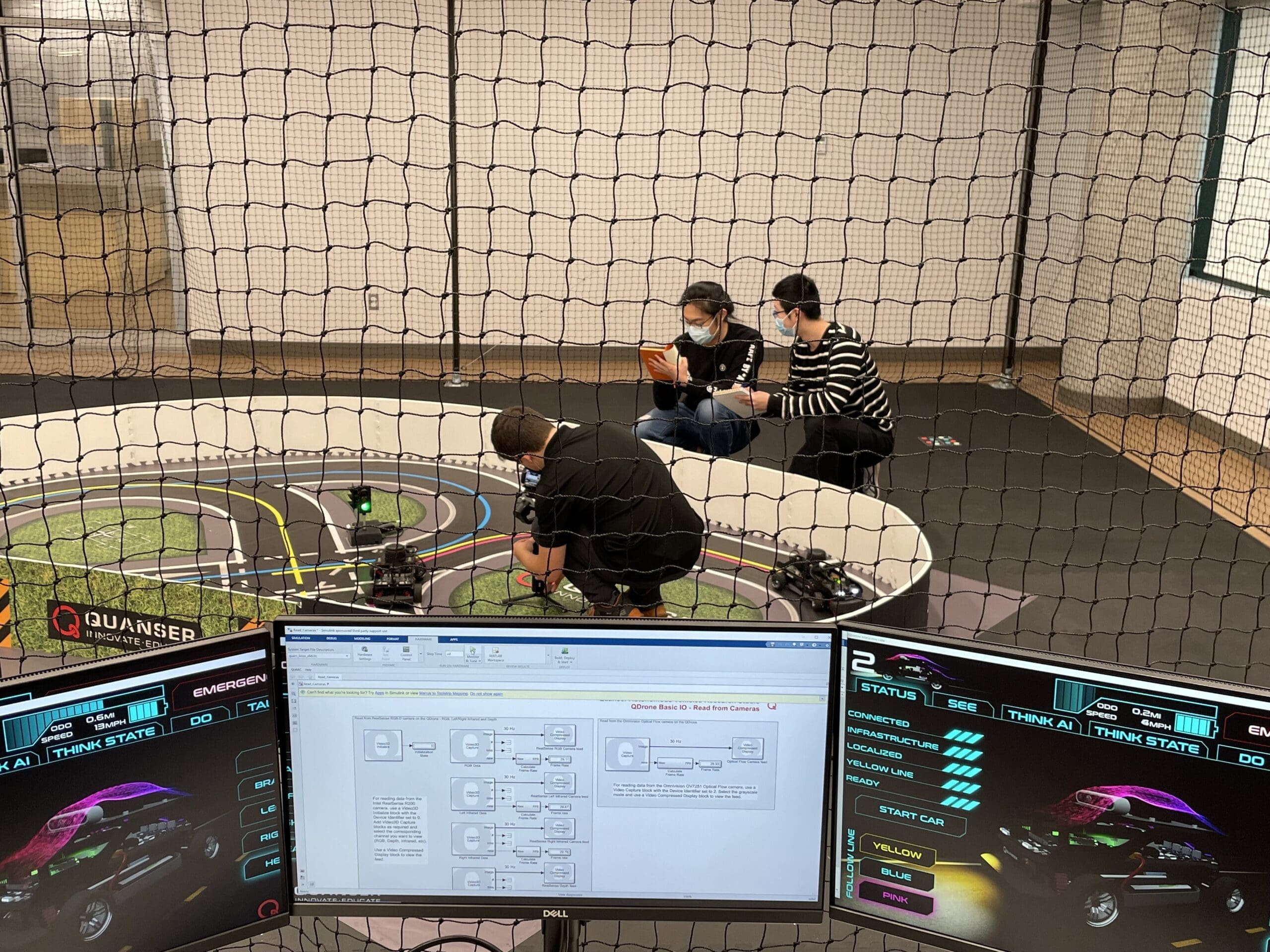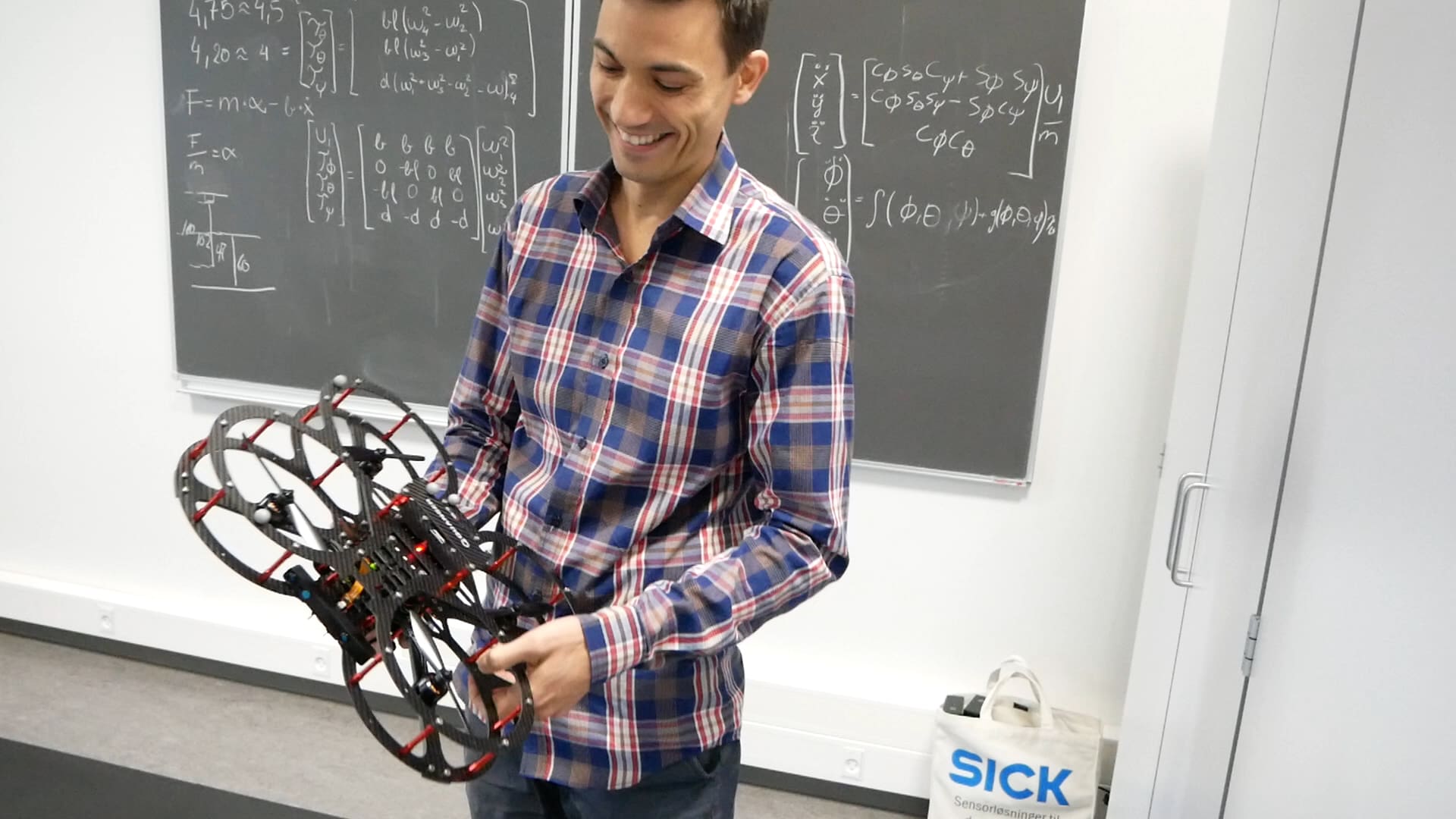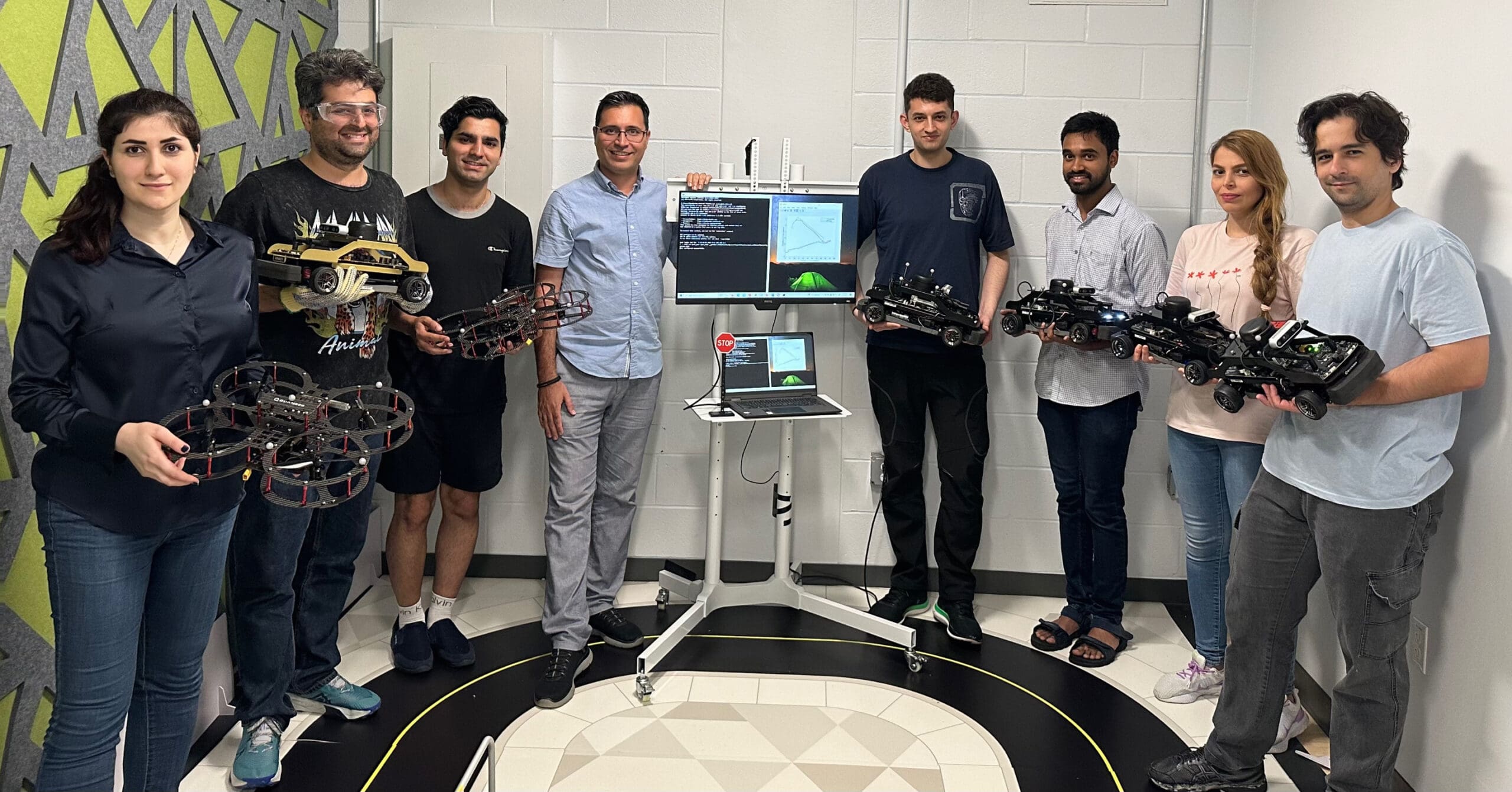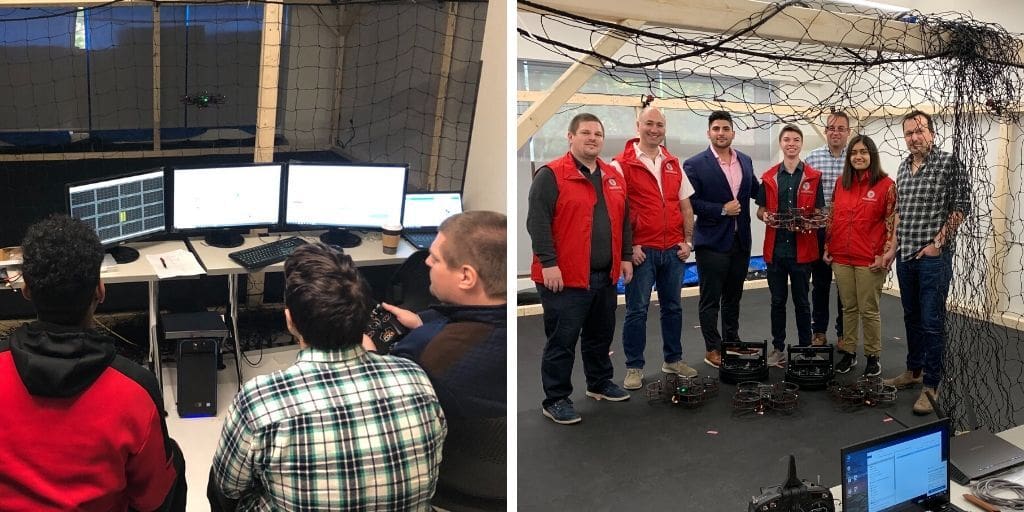
Throughout history, it’s not just big thinkers who make a mark, but also the tools they use. Galileo’s telescope, Gutenberg’s printing press, and the internet all transformed their fields. Archimedes showed us the power of the right tools when he said a lever could move the earth. Today, in education and technology, the Quanser Labs are like Archimedes’ level. It’s a complete package for universities, helping with research, teaching, project-based learning, and community outreach to inspire students.
Dr. Tolga Kaya, a prominent researcher, used the right tools to quickly build a high-quality ECE program at Sacred Heart University (SHU) a small private university in Fairfield, Connecticut, USA. Despite not having a direct background in robotics or control systems, his creativity and passion allowed him to shape an innovative program. Using Quanser labs, Dr. Kaya has developed an ECE program full of hands-on activities, engaging projects, and the latest technology. This program goes beyond studying; it excites young people about STEM, helps the community, and prepares students for real engineering challenges.
Challenge
Building a competitive, hands-on ECE program quickly and effectively
Starting a high-tech program in a field like ECE always presents numerous challenges and unique circumstances. Large projects come with significant costs and require hard work and smart decisions. Let’s hear from Dr. Tolga Kaya about his journey:
“In 2016, I took on the role of leading and developing the Electrical and Computer Engineering programs at Sacred Heart University.
It was an exciting and challenging task to bridge tradition with innovation. Our goal was to create a program that would teach the fundamental principles of engineering while staying current with the rapidly changing tech landscape—a program that could hold its own against hundreds of established programs across the country with decades of experience.
From the start, we knew that hands-on, project-based learning had to be at the core of our programs. We aimed to create an environment that would allow students to connect theoretical knowledge with practical skills. This meant building a lab that carefully integrated both software and hardware.
At Sacred Heart University, we initially adopted C for our engineering program due to computer science’s rich history. As the program grew, we introduced Python as the foundational language for our engineers. Yet, MATLAB has become the cornerstone of our curriculum. It’s where computational algorithms, embedded systems, signals, audio, and video processing transform from concepts into tangible skills.
When we began building our lab, we incorporated Elegoo smart robot car kits and our drones. We also used Arduino and Raspberry Pi extensively. Then we faced the question: Do we develop our own platform or adopt an established one? We needed a platform that would let us develop our projects and also work seamlessly with MATLAB and Python.
That’s when we discovered Quanser. It was love at first sight when I saw their setup at the ECEDHA conference in 2018. It was also timely, as we were building our lab then. Getting familiar with Quanser’s equipment was fortunate for us—it really came at the right time.”
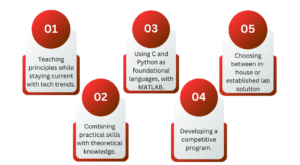
Key Challenges in Building SHU’s ECE Program
Solution
Quanser's turnkey labs and custom training for a modern ECE program
Professor Ayse Tekes, presented this insightful diagram during the “YOUser Webinar | Reinforcing Student Learning of Control Theory Using Quanser Servo and QUBE.” It captures every aspect of adopting and utilizing lab equipment through a feedback control analogy, highlighting the dynamic nature of this process.

Feedback Loop for Adopting Lab Equipment by Professor Ayse Tekes
Adopting a new solution involves careful preparation, testing, creating detailed handouts, and ongoing customization based on the students’ needs and goals. Is it easy? Yes, but it does require time, resources, experience, and internal expertise to continuously measure and refine the outcomes to achieve the desired results. These elements might not be readily available for a new program. So, why reinvent the wheel and risk losing valuable time and competitive edge?
Let’s look at how Quanser and Sacred Heart University collaborated through a feedback loop to customize their program, creating a turnkey solution that is course-ready, project-ready, outreach-ready, and research-ready.
Solution and Labs Set up
- Acquisition and Setup: “We acquired the Autonomous Vehicle Research Studio (AVRS), complete with 4 QDrones, 4 QBots, and 2 Aeros, along with virtual twins and comprehensive courseware. This package included teaching content, research examples, and project-based learning materials. The Quanser team was crucial in helping us set everything up. Our ambitious goal was to bring all lab classes together under one roof.”
- Expansion: “With Quanser’s guidance, we established the AVRS lab, and that was just the start. We went on to add the Self-Driving Car Studio to our burgeoning Smart City project.”
- Comprehensive Lab: “Our Comprehensive Lab now houses Aero, QBot, QDrone, and QCar side by side, adjacent to our classrooms. It’s a bit tight, but this proximity is the cradle of creativity. Having all elements of our program in one dynamic space is truly remarkable. We also gained access to Quanser’s course curriculum, research materials, projects, and examples.”
Feedback Loop and Adjustment
Instructors’ content, courseware, and assessment samples provided by Quanser acts like controllers and sensors in the Control Systems Approach to lab adoption. Dr. Tolga explains how they customized and adjusted lab solutions based on student outcomes and course requirements, with Quanser’s help, to achieve the desired results.
- Comprehensive Support: “Once the Quanser team left, we struggled. Our know-how left with them, leaving us confused. Our students were new to MATLAB, and I hadn’t used Simulink in 20 years. We had no experienced students, only novices struggling to utilize our new systems. It was then that the professional customer support from Quanser’s experts helped us a lot!”
- Advanced Consulting: Quanser’s support exceeded technical guidance. They acted like teachers, academic assistants, and consultants, helping us in every way during our training and teaching sessions.”
- Customized Training: “In this meeting, Quanser engineers are providing advice to students Michael and Caitlin on mapping and localization for ground robots. We realized we needed more than just a quick fix, so we reached out to Quanser again for some in-depth troubleshooting and technical consultation.”
- Workshops and Certifications: “Quanser provided exceptional support by designing and conducting 10 training workshops for our undergraduate students. We partnered with Credly and Quanser to create three certificates, which students can add to their resumes and LinkedIn profiles. These certificates are now integrated into our Learning Management System!”
Result
Undergraduate Students Publish Papers on Autonomous Systems and Applied AI
“Our undergraduate students work on advanced Capstone Projects that often lead to the publication of international papers:
We created a Capstone Project using the Quanser System, aiming to collaborate with companies. Two undergraduate computer engineering students, Gabriel and Elijah, took on a project involving aerial vehicles. They programmed a QDrone to recognize an April tag marker and land accurately on a target spot. They wrote a paper on this project and presented it at an international conference, which was a thrilling achievement and a wonderful experience for both the students and us.
Developing Hands-On Learning on Quanser Systems for Undergraduates
Below, you can see how the University of Sacred Heart used Quanser lab solutions to develop an ecosystem for their ECE program, covering students from year one.
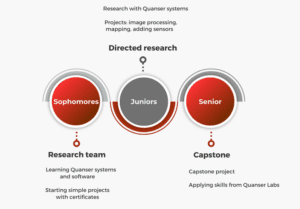
SHU’s ECE Hands-On Learning Pathway
Conclusion
The Quanser platform has been a game-changer in developing a modern and competitive ECE program at Sacred Heart University. Dr. Tolga Kaya’s strategic planning and use of innovative tools have created a hands-on, project-based learning approach that enriches students’ educational experiences and prepares them for real-world engineering challenges.
For universities looking to start a modern ECE program, Dr. Tolga Kaya recommends the following progression based on Sacred Heart University’s successful experience

Progression for Implementing Hands-On and Modern ECE Programs with Quanser
- For universities considering Quanser lab solutions, he suggests the following progression based on their experience:
- Form a dedicated team and ensure they receive proper training and workshops with Quanser from the beginning. Understanding Simulink and QUARC, Quanser’s real-time software, is crucial.
- Start with the Quanser Aero for a solid foundation. The Aero is simpler and provides a strong understanding of core principles.
- Move to the QBot for 2D system experience, building confidence in a manageable way.
- Transition to the QDrone for 3D systems.
- Finally, move to the QCar and smart city components.
This journey highlights the transformative power of the right educational tools, similar to historical innovations like Galileo’s telescope and Gutenberg’s printing press. To learn more, we invite you to listen to the YOUser webinar hosted by Dr. Tolga Kaya. We encourage faculty leading the development or transformation of a specific course or entire program to reach out to Morteza Mohammadi at Morteza.Mohammadi@Quanser.com.
